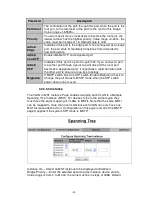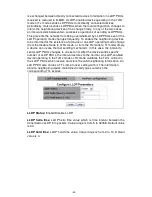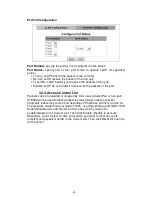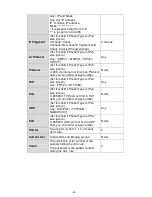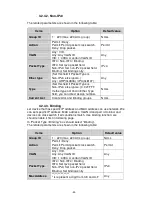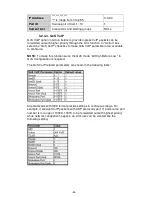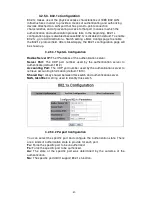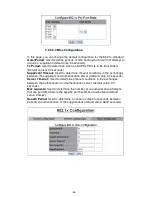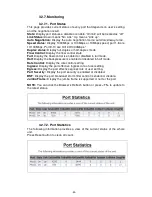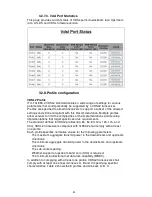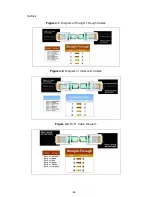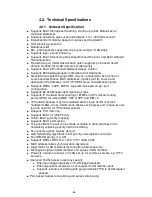
-51-
3.2.7.3. Vdsl Port Statistics
This page provides current status of VDSL port’s downstream rate: Upstream
rate, US, DS and VDSL firmware version.
3.2.8. Profile configuration
VDSL2 Profile
ITU-T G.993.2 VDSL2 standard defines a wide range of settings for various
parameters that could potentially be supported by a VDSL2 transceiver.
Profiles are specified to allow transceivers to support a subset of the allowed
settings and still be compliant with this Recommendation. Multiple profiles
allow vendors to limit the complexities of the implementations and develop
implementations that target specific service requirements.
The standard defines 8 VDSL2 profiles (8a, 8b, 8c, 8d, 12a, 12b, 17a, and
30a). VDSL2 transceivers compliant with G.993.2 shall comply with at least
one profile.
Each profile specifies normative values for the following parameters
·
The maximum aggregate transmit power in the downstream and upstream
directions;
·
The minimum aggregate transmit power in the downstream and upstream
directions;
·
The sub-carrier spacing;
·
Whether support of upstream band zero (US0) is required;
·
The minimum bidirectional net data rate capability (MBDC);
In addition to complying with at least one profile, VDSL2 transceivers shall
comply with at least one annex (Annexes A, B and C) specifying spectral
characteristics. Table 2 shows the 8 profiles and Annexes A, B, C.

